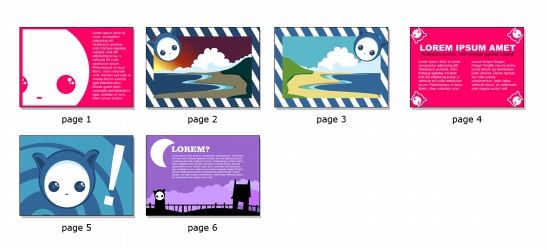
Introduction:
In the dynamic world of graphic design, effective template management is a cornerstone for both creativity and efficiency. CorelDRAW, a powerhouse in the realm of vector graphics editing, provides designers with robust tools to streamline their workflows. This comprehensive guide explores the intricate process of tagging, renaming, and deleting templates in CorelDRAW, offering insights into the importance of organization and providing step-by-step instructions for optimal template management.
Section 1: The Significance of Template Organization
1.1 Streamlining Design Workflows: Efficient template organization is vital for streamlining design workflows. Understand how tagging, renaming, and deleting templates contribute to a more organized and accessible template library.
1.2 Consistency and Branding: Organizing templates ensures consistency in design elements, reinforcing brand identity across projects. Explore how a well-maintained template library facilitates the creation of cohesive and professional-looking designs.
Section 2: Navigating CorelDRAW’s Template Library
2.1 Accessing the Template Manager: Familiarize yourself with the Template Manager in CorelDRAW, the central hub for template organization. Navigate through this feature to access and manage your template library efficiently.
2.2 Understanding Template Categories: Explore the diverse template categories available in CorelDRAW. From brochures and business cards to posters and social media graphics, understand how templates are categorized to cater to various design needs.
Section 3: Tagging Templates for Enhanced Organization
3.1 Defining Tags in CorelDRAW: Tags are metadata descriptors that provide additional information about templates. Delve into the concept of tagging and understand how it enhances the searchability and categorization of templates.
3.2 Adding Tags to Templates: Learn the step-by-step process of adding tags to templates in CorelDRAW. Discover how to assign relevant keywords or descriptors to templates for easy retrieval and efficient organization.
Section 4: Renaming Templates for Clarity and Consistency
4.1 Importance of Clear Names: Clear and descriptive names for templates are crucial for efficient organization. Understand how a well-chosen name provides immediate information about the template’s purpose, style, or content.
4.2 Renaming Templates in CorelDRAW: Explore the process of renaming templates within CorelDRAW. Learn how to edit template names to reflect changes in design, project specifics, or evolving branding requirements.
Section 5: Deleting Unused or Outdated Templates
5.1 Regular Review and Cleanup: Regularly reviewing and cleaning up your template library is essential for maintaining an organized workspace. Understand the importance of removing unused or outdated templates to declutter your design environment.
5.2 Deleting Templates in CorelDRAW: Walk through the steps of deleting templates in CorelDRAW. Learn how to remove templates that are no longer needed, ensuring that your template library remains focused on relevant and up-to-date resources.
Section 6: Advanced Techniques for Template Management
6.1 Creating Template Collections: Explore the advanced feature of creating template collections. Learn how to group templates based on themes, projects, or clients, providing an additional layer of organization within your template library.
6.2 Utilizing Version Control: Consider implementing version control for templates that undergo frequent updates. This practice involves tracking and labeling template versions to ensure that designers can access specific iterations when needed.
Section 7: Troubleshooting and Tips for Effective Template Management
7.1 Addressing Tagging Challenges: If facing challenges with tagging templates, troubleshoot the issues by ensuring consistent tagging practices. Establish clear guidelines for tagging conventions to maintain uniformity.
7.2 Backing Up Template Libraries: Before making significant changes or deletions, consider backing up your template library. This precautionary step ensures that you can restore templates in case of accidental deletions or changes.
Section 8: Collaborative Workflows and Template Management
8.1 Sharing Tagged Templates: Explore collaborative workflows by sharing tagged templates with team members. Learn how to maintain consistency in tagging conventions to facilitate seamless collaboration.
8.2 Communicating Renaming Practices: In a team environment, effective communication about renaming practices is crucial. Establish guidelines to ensure that all team members adhere to a consistent approach in template naming conventions.
Conclusion:
In conclusion, mastering the art of tagging, renaming, and deleting templates in CorelDRAW is a pivotal step toward achieving optimal organization and efficiency in design workflows. Whether you are a seasoned professional or a newcomer to the graphic design world, this comprehensive guide equips you with the knowledge and techniques needed to navigate the intricacies of template management. By understanding the significance of organization, exploring tagging and renaming practices, learning how to delete templates effectively, and implementing advanced techniques, designers can ensure a well-organized and streamlined template library within CorelDRAW, facilitating a more efficient and creative design process.